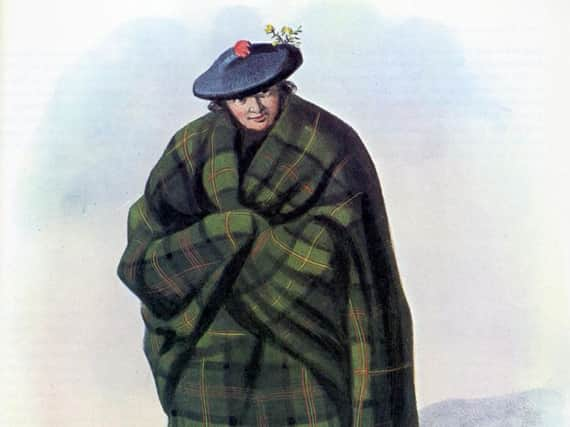Health of Highlanders during clan era to be investigated for 'first time'


Dr Shirley Curtis-Summers of the University of Bradford has analysed more than 180 skeletons buried under the old Tarbat Parish Church in Portmahomack, Easter Ross as part of her research into the medieval era in the north.
Of these, 40 are the remains of children with the overwhelming majority of them dating to the 15th to 17th Centuries.
Advertisement
Hide AdAdvertisement
Hide AdDr Shirley Curtis-Summers said evidence suggests high mortality rates among the very young - those in the first months of life - with analysis offering insight into the diet and diseases of a time loaded with inter-clan warfare and violence.
"It could be a number of things. It could be related to living in close proximity to animals, who were probably living in the house, with the children picking up animal pathogens as a number of children had skeletal evidence of infections.
"It could be that their mothers had poor nutrition and even if they were breastfeeding, their nutrition just might not have been sufficient."
The remains found at Tarbat church span hundreds of years of Highland history, from the 6th Century when the land used as a Pictish farmstead to its time as a Pictish monastery that was later destroyed by a Viking raid.
The timeline of the site extends to the 15th to 17th Century, when it served as a parish church.
One child skeleton found at the site dates from the monastic period, which is an unusual find in a Pictish monastery.
This child may have been offered to the monastery by a local family and raised by the monks as an oblate and being immersed in religious life and learning.
Tests have shown that the child, who was probably between 10 and 12 when he or she died, was eating the same diet as the monks, which included animal meat and cereals, such as barley.
Advertisement
Hide AdAdvertisement
Hide AdNo fish appeared to be consumed at the monastery, which is perhaps surprising of the later medieval monastic period but not so surprising from a Pictish monastery that followed early Irish Christianity and rules, Dr Curtis-Summers said.
Dr Curtis-Summers, a specialist in human osteology, said "We need to learn more about the health of Highland children.
"There are court records from the 18th century that shows cases of child abandonment and child murder but they don't give us insight into well being
"The one primary source we have is the skeletons which can give us direct evidence of diet, trauma and disease."
Dr Curtis-Summers has worked on the Tarbat skeletal collection for over 10 years and, along with colleague Ms Cecily Spall of York-based FAS Heritage.
Part of their current research has focused on the skeletons of two men of the clan era who were laid to rest in a 'special burial' with four skulls placed around their bodies.
Dr Curtis-Summers was able to establish that one of the men was fatally injured by a sword which cut off the bottom half of his face.
She described the skeletons held at the church, which is now the Tarbat Discovery Centre and museum, as 'vital' to a greater understanding of life in the Highlands.
Advertisement
Hide AdAdvertisement
Hide AdShe added: "I would say this skeletal collection at Portmahomack is the Holy Grail in terms of the resources we have for Pictish and Medieval lifeways but also to learn about everyday family life in the Highlands. With future research, we can learn so much more about the children, families and clans of the Scottish Highlands"